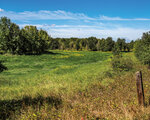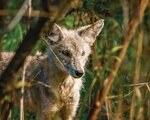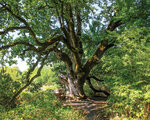


The Ridgefield National Wildlife Refuge offers habitat for migrating birds to rest, an area for wildlife to frolic and a place for people to enjoy nature close to Clark County’s urban sprawl.
As summer turns to fall, migrating birds will be in abundance at the Ridgefield National Wildlife Refuge. In the summer months, species diversity and total number of birds are down compared with fall totals, refuge manager Juliette Fernandez said.
Coming up soon in the fall, bird species like the tundra swan, sandhill crane, Northern pintail and more stop by the refuge for a handful of months where they may breed or just take advantage of the Ridgefield National Wildlife Refuge’s 5,300 acres.
The mammals, reptiles and amphibians people can see vary depending on the season, with cold-blooded critters becoming harder to find in fall and winter. For mammals, the seasons have a large impact on who will be frolicking about the refuge.
“There are a mix, and you’ll see completely different wildlife here in the summer than you will in the winter,” Fernandez said. “Because we are along the major flyway, all of the birds that are migrating use us as a resting stop. So in the winter, you’ll see a ton of birds and mammals, but really the star of the show is birds in the winter months.”
Ebird, an online database of bird observations globally states that, as of Thursday, Sept. 14, 239 species of birds have been documented in the refuge’s River ‘S’Unit. The total number of species at the River ‘S’Unit ranks 15th in the state for species diversity.
The trails and driving routes at the refuge have made it a premier birding destination in the state, Fernandez said.
What makes Ridgefield National Wildlife Refuge’s River ‘S’Unit special is its accessibility.
The River ‘S’Unit is home to a year-round four mile auto-tour loop that provides wildlife viewing for all abilities.
“We have an auto-tour route located here in Ridgefield. It’s about a two-minute drive from [the Carty Unit] and that as of Oct. 1 is drive only, so you have to stay in your vehicle,” Fernandez said. “That allows you to see wildlife up close. You might see ducks, swans and cranes coming through, and we get such an influx of birds in the winter. You may also see Columbian white-tailed deer, which is another thing that we manage here.”
When walking is not allowed on the auto-tour loop and the Kiwa Hiking Trail is closed for the season, around the halfway point is a year-round short walk to an observation blind that has an accessible bathroom, as well.
Because the wildlife refuge primarily serves the animals there, people visiting the refuge must follow some rules.
“During your visit, please respect other visitors and wildlife by leaving pets at home, and refraining from engaging in artifact collecting, riding bikes, fires, camping and off-road driving,” the refuge website states.
For more information about the wildlife refuge, visit fws.gov/refuge/ridgefield, or call the main office at 360-887-4106. To see Ebird information about the Ridgefield National Wildlife Refuge’s River ‘S’Unit, search for the Ridgefield NWR-River ‘S’ Unit on ebird.org.